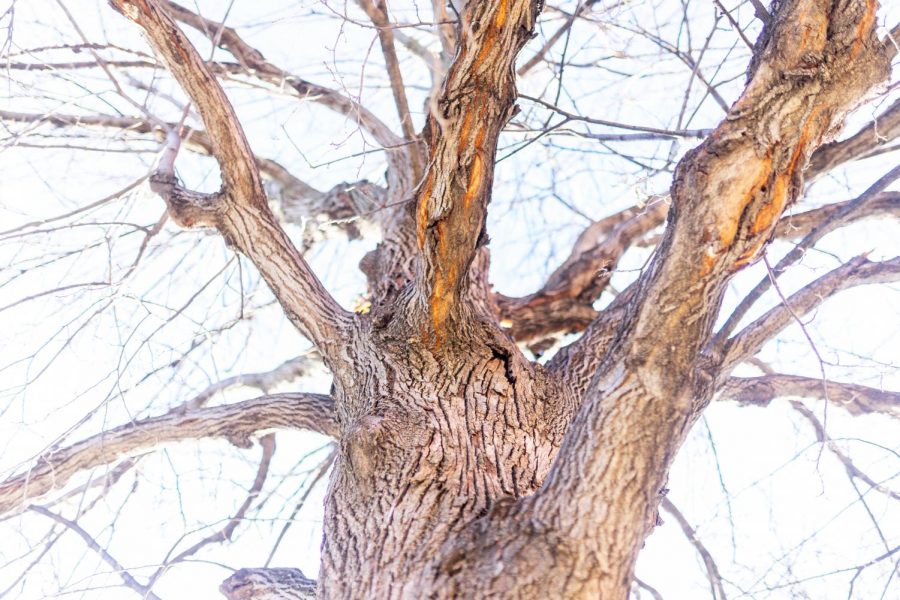On the St. Paul campus of the University of Minnesota, rows of tiny elm trees sprout in a test field run by University researchers. These elms are a series of new trees cloned by the University that show promise to be resistant to a deadly disease that has killed thousands of elm trees that traditionally line the boulevards and parks around the Twin Cities.
As part of ongoing research work for almost 15 years, researchers are working to study trees that appear to be resistant to Dutch elm disease and propagate clones of the trees that will then be studied and eventually planted in the cities.
Essential to the urban landscape, elm trees have many environmental, energy and human benefits, said Ben Held, one of the principal investigators on this project. Not only does the leaf canopy provide shade and wind resistance for buildings, the trees are hardy and can withstand harsh conditions like drought, road salt and root damage caused by construction work.
Finding new ways to diversify and strengthen trees that make up the urban landscape is becoming more and more important, he said, especially with other invasive pests like the emerald ash borer killing valuable ash trees.
Likely originating in Asia, Dutch elm disease was first observed in the U.S. in the 1930s. Since then the disease has killed billions of elms around the United States and abroad, Held said.
Spread by trees whose roots touch each other and by bark beetles that carry spores from the tree, the disease restricts water flow in the tree and can be identified by a characteristic wilting at the top of the tree’s canopy.
“It’s been one of the most devastating invasive pathogens on woody plants,” Held said.
So far, treating the disease is limited and expensive, he said. Infected trees can be given regular fungicidal treatments or removed to reduce the chance of spreading the disease to other trees nearby.
“Resistance right now is really our best bet for managing the disease,” Held said. “That’s really what’s driving this work.”
Part of the work researchers are doing, partially funded by the Minnesota Invasive Terrestrial Plants and Pests Center, is analyzing elm trees that appear to be resistant to the disease, despite others nearby that have become infected.
Identifying these trees could prove to be the key to developing a new type of Dutch elm disease-resistant tree. Aided by city foresters, land owners, the Minnesota Department of Natural Resources and the team’s own scouts, researchers have identified trees like this around the state.
By taking branch tips from naturally resistant trees, researchers use two methods to grow a tree genetically similar to those elms, said Bob Blanchette, another principal investigator on the project. Researchers either treat the cutting with root growth-promoting hormones or graft the cuttings onto cut elm seedlings.
Once propagated and planted in St. Paul and the Minnesota Landscape Arboretum, the researchers will drill a hole into the main stem of the tree, inject the tree with concentrated spores of the fungus — which causes the disease — and wait to see its effect. Because an elm tree can take four to five years to get to this stage, Held said it is a long-term process.
So far trees that show resistance to Dutch elm disease have a slightly different anatomy that allows them to respond quickly and stop the disease from spreading in the tree, Blanchette said.
“Our work so far is identifying some differences in how they morphologically defend themselves,” Held said. “We’re starting with a broader approach and eventually hope to find those genetic underpinnings in the future.”
Initially, elm trees made up 95% of trees lining Minneapolis boulevards, said Ryan Murphy, a researcher in the University’s Department of Forest Resources who is a fellow on the project. Losing these trees means not only a loss of their benefits but a symbolic loss, too.
“You have a big hole in the sky,” Held said. “You’re losing a 200-year-old tree canopy, and that drastically changes the feel and look of these neighborhoods. But landscape-wise there’s a great benefit to these specific insects and wildlife who use these elms. I think in certain areas it’s pretty dramatic.”
Their work highlights the dangers of planting monocultures of trees like elms, which could be lost by an invasive pest or disease like Dutch elm disease.
Philip Potyondy, the sustainable forestry coordinator from the Minneapolis Park and Recreation Board, said elm trees bring tremendous benefits to the city. They reduce the amount of water that goes into storm drains, provide shading on homes and buildings, which reduces energy costs, and even have mental health benefits.
“To have researchers figuring out what is going to help trees succeed is really great,” Potyondy said. “The continued research in this area is really helpful for getting trees that work well in the spaces we live and breathe in.”
Correction: A previous version of this article mischaracterized Dutch elm disease; it is a fungus.














